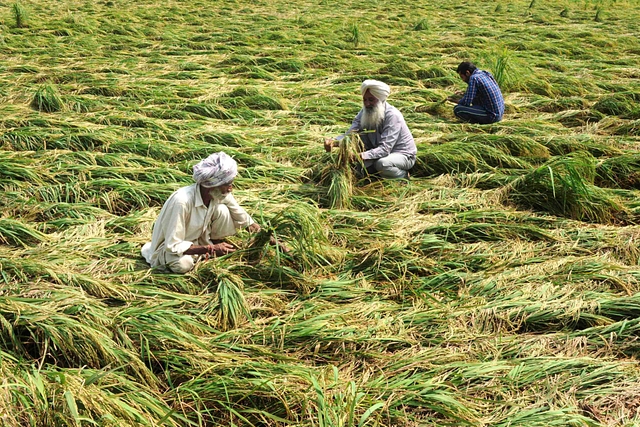
Soil Health Card Scheme Increases Farm Income Up To Rs 30,000 Per Acre, Boosts Production, Shows Study
A study conducted by the National Productivity Council (NPC) has found that the Soil Health Card (SHC) scheme launched by the PM Modi-led government in 2015, shows that the has helped farmers substantially reduce the cost of production and achieve higher production.
The government study shows that the scheme can help increase the farm income up to Rs 30,000 per acre, depending on the crop, reports Hindu BusinessLine.
Covering 1,700 farmers in 76 districts of 19 States and 170 soil testing labs, the study has been released on the completion of five years of the government scheme.
What is a Soil Health Card?
Under the scheme, each farmer is given a ‘Soil Health Card’ for his farmland, which contains the information about the status of his soil with respect to 12 parameters, namely N,P,K (Macro-nutrients) ; S (Secondary- nutrient) ; Zn, Fe, Cu, Mn, Bo (Micro - nutrients) ; and pH, EC, OC (Physical parameters).
For this, the soil samples are taken generally two times in a year, after harvesting of Rabi and Kharif Crop respectively or when there is no standing crop in the field. These samples are then tested in the laboratories.
Based on this, the SHC also advises the farmer about the fertiliser and soil amendment required for the farm.
The card is given once for a cycle of three years. In the next cycle of 3 years, the new SHC will be able to record the changes in the soil health for the subsequent period.
Since the launch of the scheme, the card has been issued twice.
Challenge of fertiliser overuse
The Indian farmers are notorious for indiscriminate use of the fertilisers and pesticides. This is, in part, facilitated by a huge government subsidy for fertilisers.
Urea, being most common Nitrogen fertiliser, is indiscriminately used. Excessive use of urea leads to several adverse implications on soil, crop quality and overall ecosystem.
Fertiliser over-use causes a lot of problems.
Overtime, the soil fertility decreases, and more and more fertiliser quantity is required. Excess nitrogen when lost through denitrification, encourages climate change and seeps much below root level to cause groundwater pollution.
It also increases crop succulence, making the plants prone to disease and pest infestation, and to lodging.
It also increases the cost of production for the farmers and lowering of net profits.
How SHC tackles the challenge
The scheme encourages the farmers to follow scientific prescriptions regarding the fertiliser.
The study showed that in the case case of rice, the cost of cultivation was reduced by 16-25 per cent and savings of nitrogen was found to be around 20 kg per acre.
For pulses, there was 10-15 per cent reduction in the cost and savings of 10kg per acre urea.
Similarly in oilseeds, the reduction was 10-15 per cent and savings on nitrogen was 9 kg per acre in sunflower, around 23 kg per acre in groundnut and around 30 kg per acre in castor.
For cotton the cost reduction was 25 per cent and and savings on nitrogen fertiliser was around 35 kg per acre, while in potato the saving on nitrogen fertiliser was 46 kg per acre, the study showed.
Increased productivity
The study showed that the judicious use of fertilisers led to increased production of crops.
The researchers noted a 10-20 per cent increase in production of paddy and 10-15 per cent in wheat and jowar. For pulses, a 10-30 per cent rise in production was observed.
There was a 40 per cent jump in oilseeds and 10-20 per cent in cotton production, the study noted.